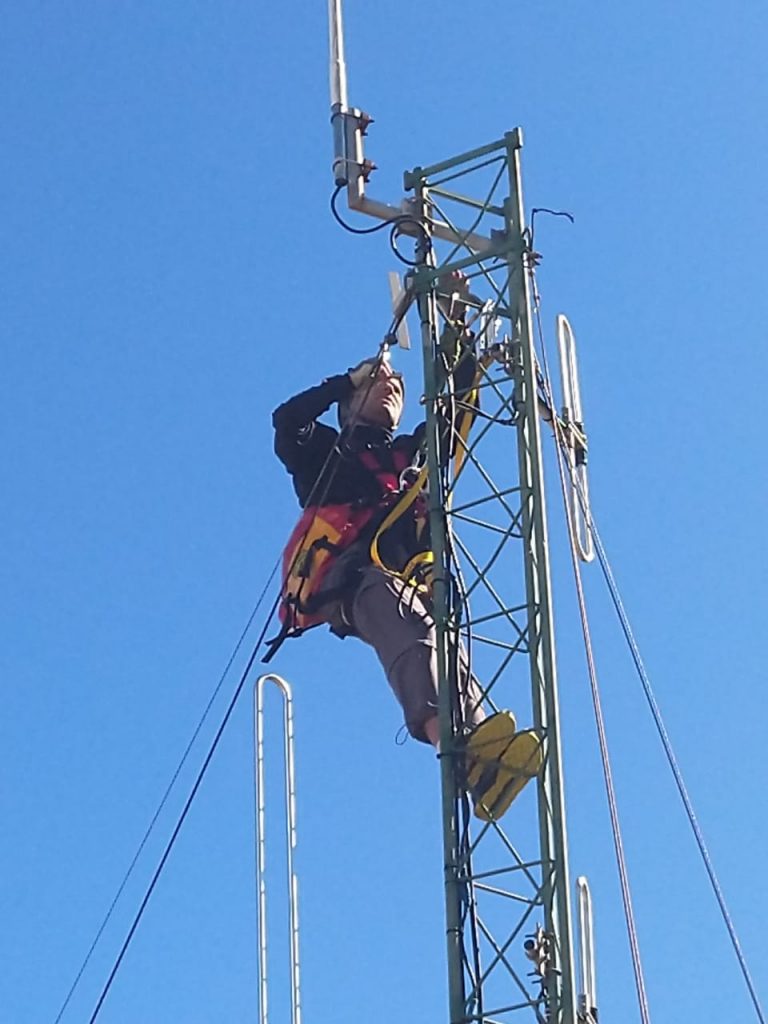Author Archives: ZS1V
Status report 2021-09-01
Status Report 2021-08-25
Status Report 2021-08-17
Jonaskop Maintenance 2021-08-15
On Sunday morning, Jan ZS1Z and Paul ZS1V set out to recommission the links to Riversdale and Hanskop at Jonaskop. It was an uncharacteristically perfect weather day at the top of the mountain, with some small pockets of ice from the recent Cape winter weather still in the shady areas and slowly leeching off the towers.
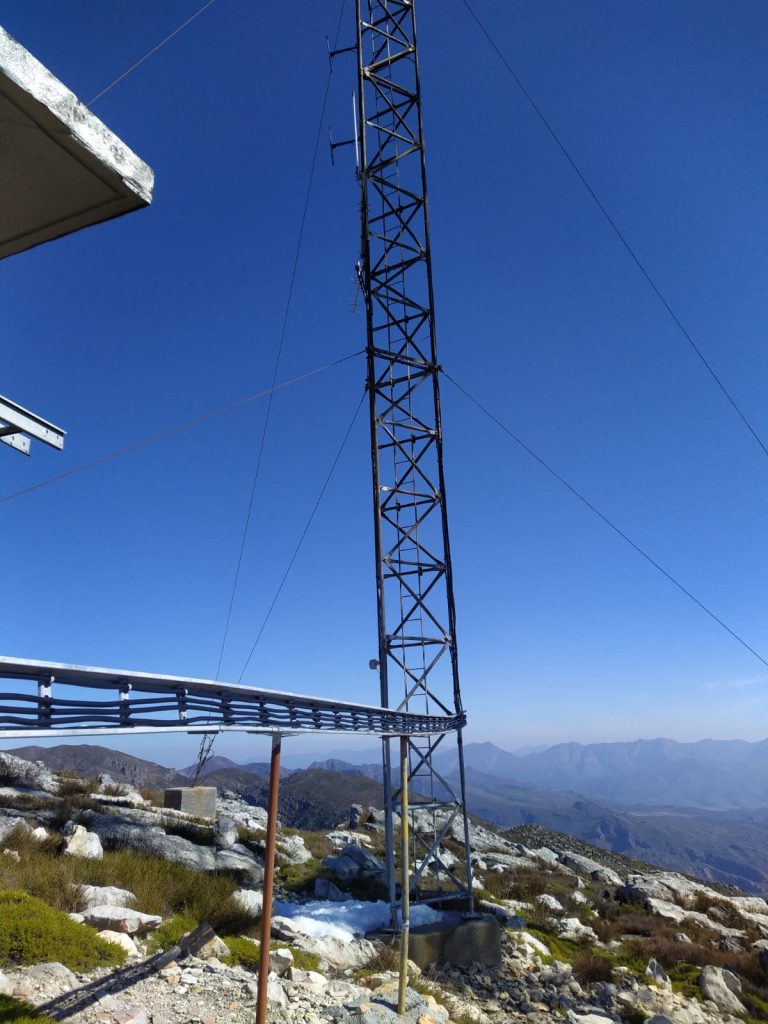
The repeater, links and controller were reinstalled in the equipment housing. The battery and PSU voltage sensors, and the interior and exterior temperature sensors were recalibrated. The tower guys were inspected to see how they stood up to the recent storms after their pre-winter maintenance, and were found in good order. The SWR on all the antennas was tested, and these too were found to be good.
As the team was about to leave the site, testing by Trevor ZS1TR via the Jonaskop repeater and Sybrand ZS1SJ via the Hanskop repeater, revealed an issue with noise being intermittently inserted into the audio.
Jan spent a further hour or two fault-finding, eventually tracing the problem to a setting on the link controller. This setting was corrected but a short while later the problem recurred and it was found that the controller was spuriously flipping configuration bits. Several attempts were made to get the configuration corrected but every time the configuration became corrupted again.
The team was left with no choice but to remove the faulty controller and link radios. The repeater was left operational in a standalone state.
Hanskop Maintenance 2021-07-17
Jan ZS1Z and Paul ZS1V departed for Hanskop on the morning of Saturday 17 July to diagnose and hopefully attend to some issues that had been plaguing the Hanskop repeater system recently.
The track to the Hanskop site has been steadily deteriorating over the last few years and the recent Cape winter storms only exacerbated the issue.
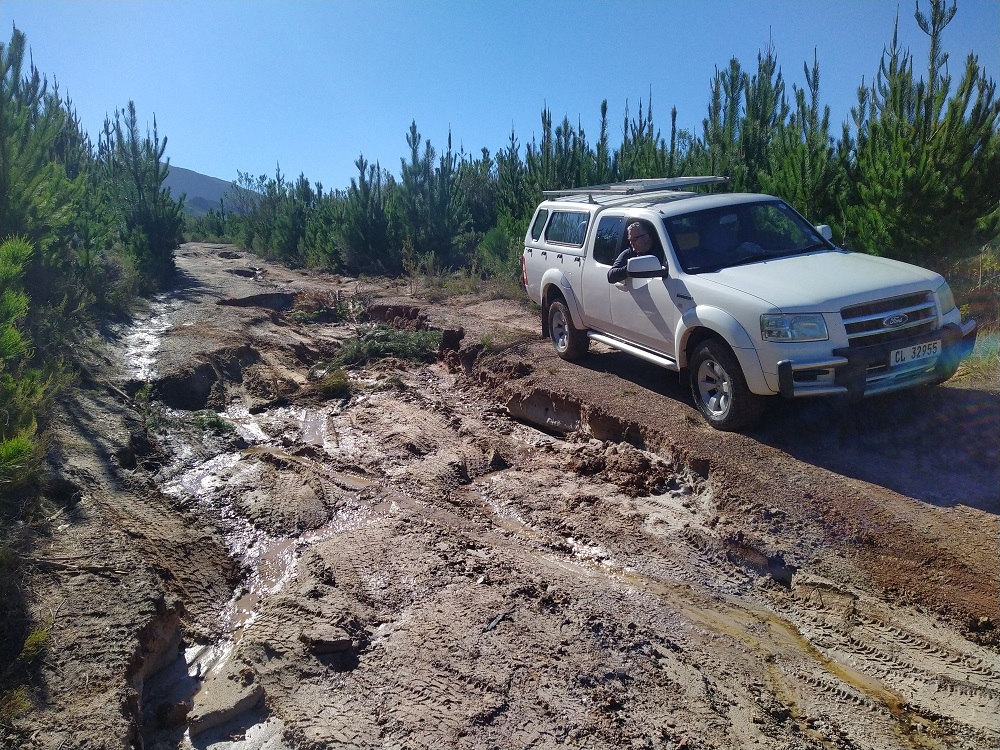
The repeater system was checked thoroughly. The antennas, feedlines and lightning protection units were all found to be good. The repeaters themselves were also found to be operating correctly. The linking controller was then re-initialised and the firmware reloaded before the configuration was reapplied.
Spurious activations of the repeaters on PTT release were noticed. This appears to be coming from somewhere along the chain towards the B2B side of the network and will be further investigated from CPUT.
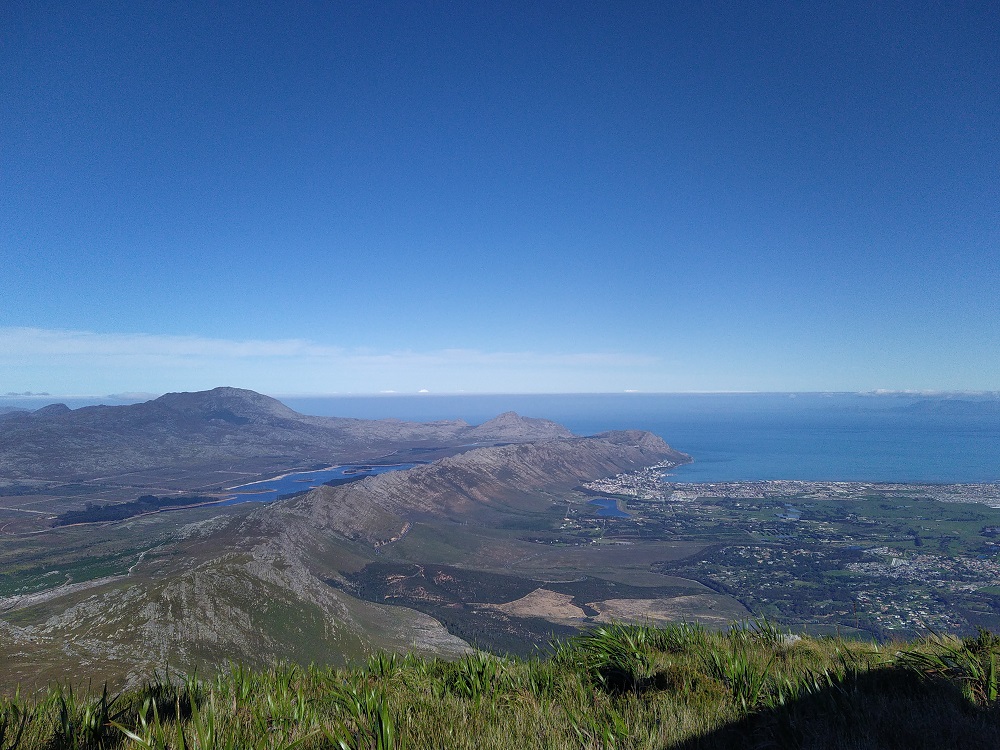
Hanskop emergency visit 20200601
On Monday 1 June 2020, Jan ZS1VDV and Paul ZS1V visited the Hanskop 145.600 site to assess the damage to the equipment after a burglary that occurred over the weekend prior.
The perpetrators ripped out and made off with the battery charger, multiplug and 220V power lead. Temporary repairs were made and plans put in place to return and complete the restoration.
Bottelary repairs 20200530
On Saturday 30 May, John ZS1EQ, Paul ZS1V and Jan ZS1VDV visited the Bottelaryberg highsite that hosts the 145.575 DSTAR and 438.300 multimode digital repeaters. While both repeaters were operating correctly, the internet link to the site had been down for several months, limitting the utility of these repeaters.
The internet link was re-established and a general health check of the site was performed. The gateway unit for the VHF DSTAR repeater was found to be faulty and removed from the site. As a consequence the UHF multimode repeater is now fully functional, but the DSTAR repeater is not linked to the internet.
A battery switch over and low voltage cutout unit on the backup batteries was installed.
Jonaskop maintenance 20200509
On Saturday 9 May, Jan ZS1VDV and Ralf ZS1RK visitted the Jonaskop 145.675 repeater site. High wind conditions prevented close up inspection of the antenna connections on the tower, but the SWR of all the antennas were checked and found to be good.

The VHF repeater squelch was adjusted. The audio levels were re-aligned and one coax connector was seated correctly.
Hawequa Maintenance 20200425
On Saturday 25 April, ZS1VDV, ZS1V and ZS1RK visited the Hawequa site, home of the 145.650 repeater and 438.800 link repeater between Piketberg and CPUT. The 4 x 200AH backup batteries donated for the purpose were installed with their fusebox and charger.
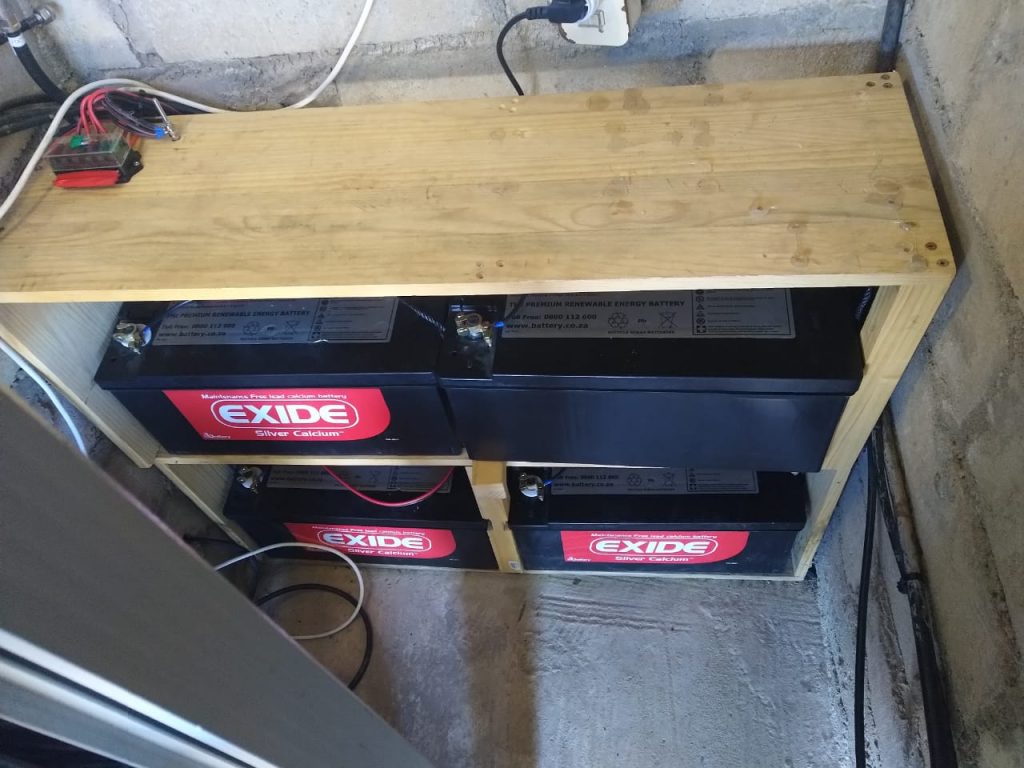
In addition the Vertex/Motorola repeater system swapped out for a pair of Kenwoods, a TKR750 VHF and a TKR850 UHF.
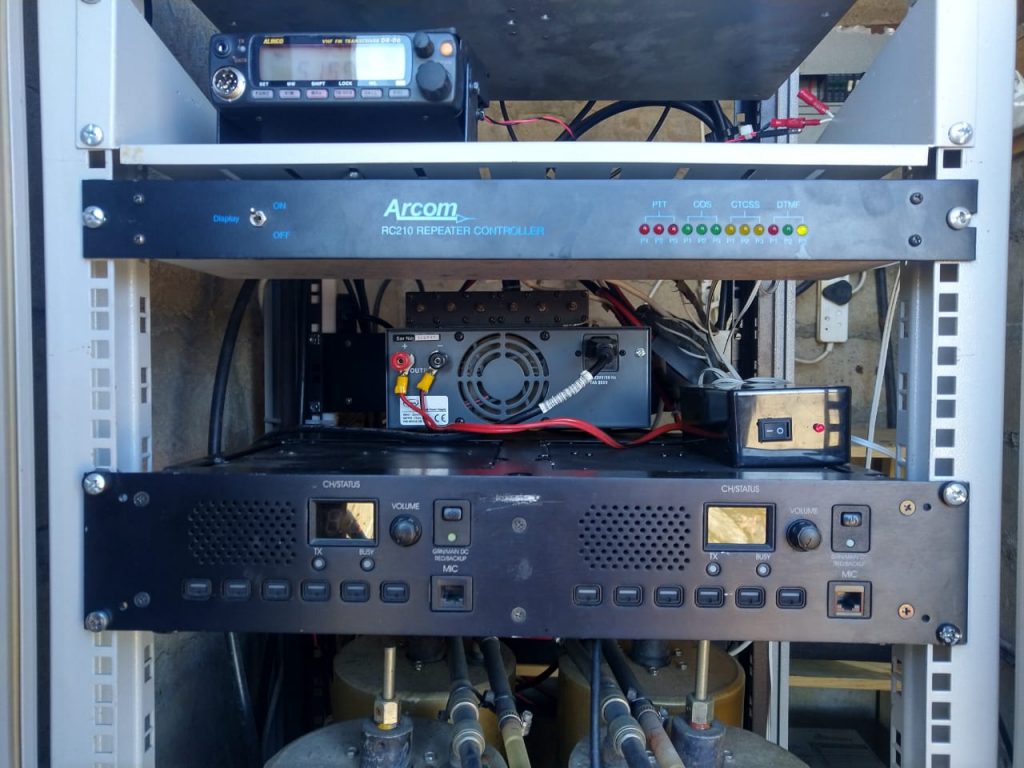
The waterproofing of the antenna connectors was also inspected and found to be in good order for the coming winter.
